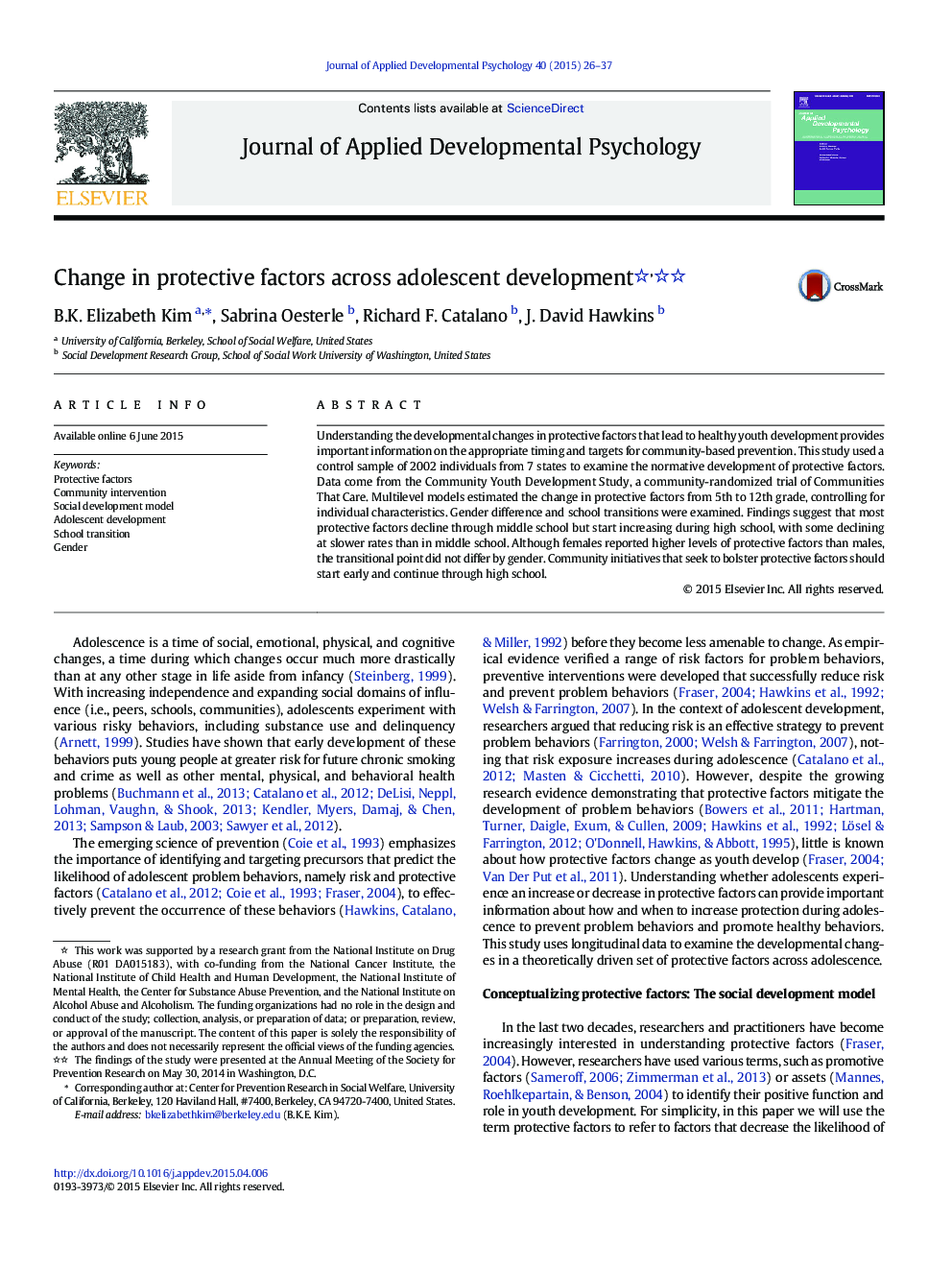| Article ID | Journal | Published Year | Pages | File Type |
|---|---|---|---|---|
| 359629 | Journal of Applied Developmental Psychology | 2015 | 12 Pages |
•We examined the change in protective factors across adolescence•Protective factors specified in the Social Development Model decline during middle school•Most protective factors either slow in decline or increase during high school•Females reported higher levels of protective factors•Developmental trajectories do not differ by gender
Understanding the developmental changes in protective factors that lead to healthy youth development provides important information on the appropriate timing and targets for community-based prevention. This study used a control sample of 2002 individuals from 7 states to examine the normative development of protective factors. Data come from the Community Youth Development Study, a community-randomized trial of Communities That Care. Multilevel models estimated the change in protective factors from 5th to 12th grade, controlling for individual characteristics. Gender difference and school transitions were examined. Findings suggest that most protective factors decline through middle school but start increasing during high school, with some declining at slower rates than in middle school. Although females reported higher levels of protective factors than males, the transitional point did not differ by gender. Community initiatives that seek to bolster protective factors should start early and continue through high school.
